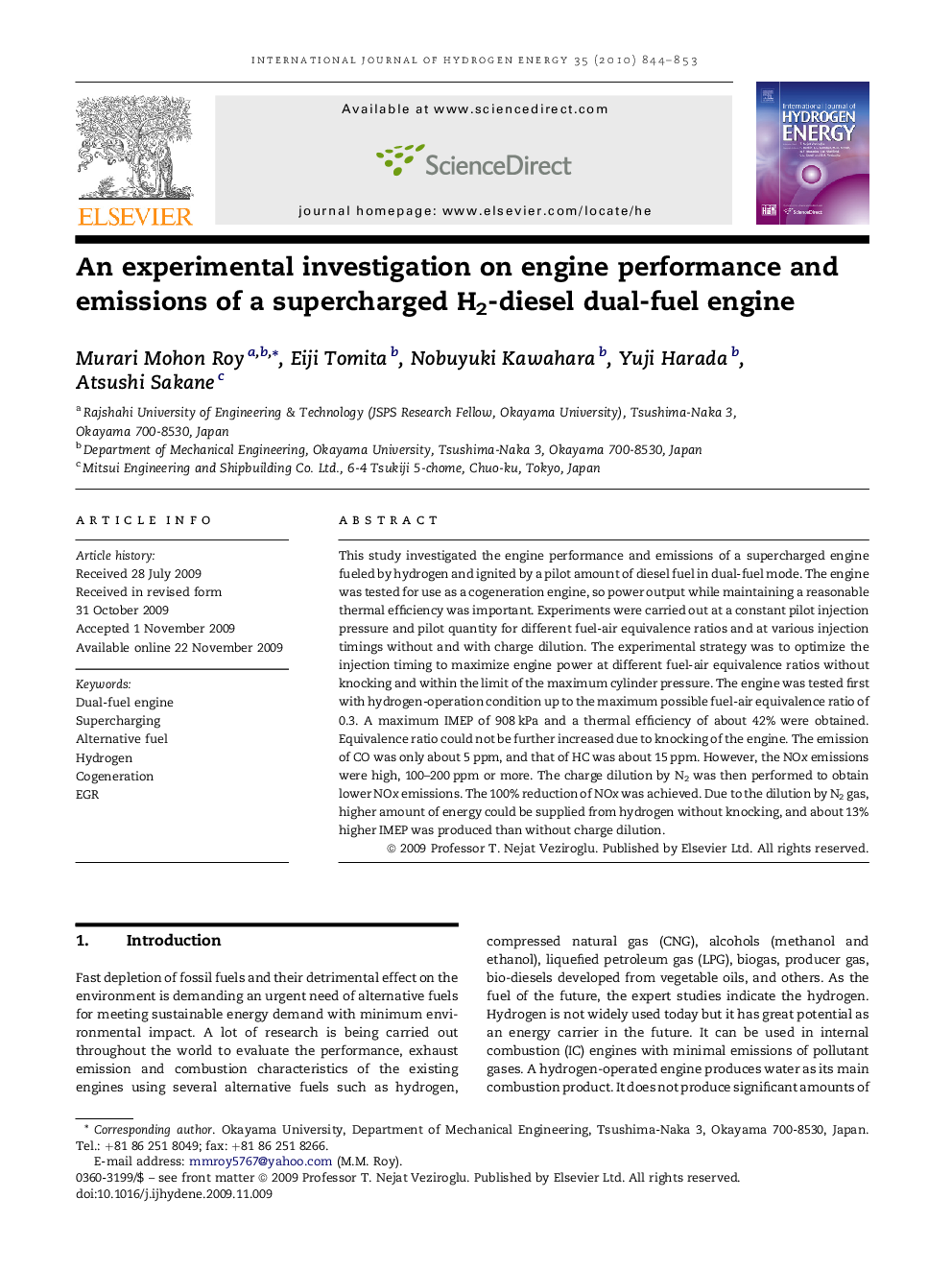| Article ID | Journal | Published Year | Pages | File Type |
|---|---|---|---|---|
| 1281070 | International Journal of Hydrogen Energy | 2010 | 10 Pages |
This study investigated the engine performance and emissions of a supercharged engine fueled by hydrogen and ignited by a pilot amount of diesel fuel in dual-fuel mode. The engine was tested for use as a cogeneration engine, so power output while maintaining a reasonable thermal efficiency was important. Experiments were carried out at a constant pilot injection pressure and pilot quantity for different fuel-air equivalence ratios and at various injection timings without and with charge dilution. The experimental strategy was to optimize the injection timing to maximize engine power at different fuel-air equivalence ratios without knocking and within the limit of the maximum cylinder pressure. The engine was tested first with hydrogen-operation condition up to the maximum possible fuel-air equivalence ratio of 0.3. A maximum IMEP of 908 kPa and a thermal efficiency of about 42% were obtained. Equivalence ratio could not be further increased due to knocking of the engine. The emission of CO was only about 5 ppm, and that of HC was about 15 ppm. However, the NOx emissions were high, 100–200 ppm or more. The charge dilution by N2 was then performed to obtain lower NOx emissions. The 100% reduction of NOx was achieved. Due to the dilution by N2 gas, higher amount of energy could be supplied from hydrogen without knocking, and about 13% higher IMEP was produced than without charge dilution.
